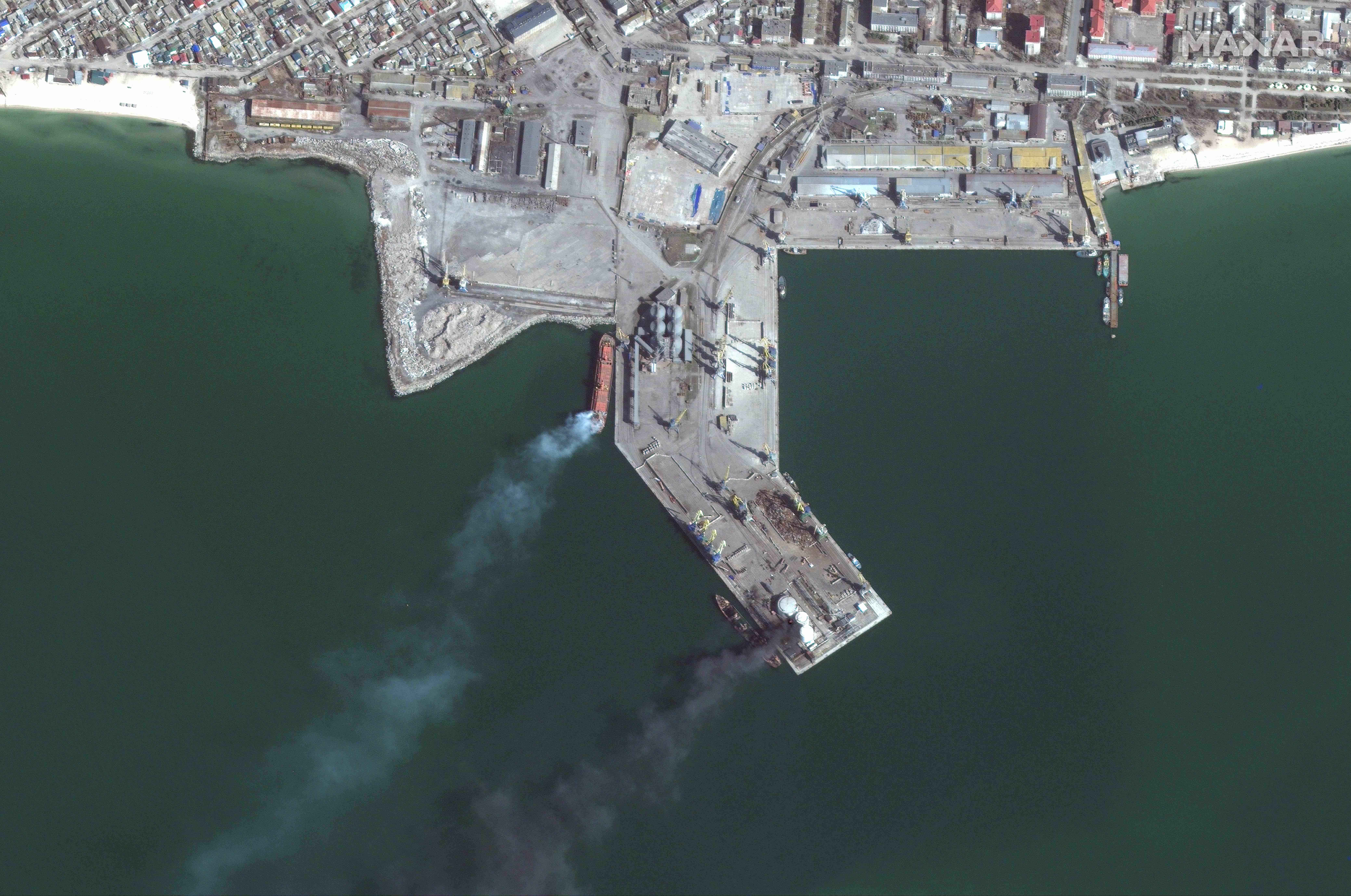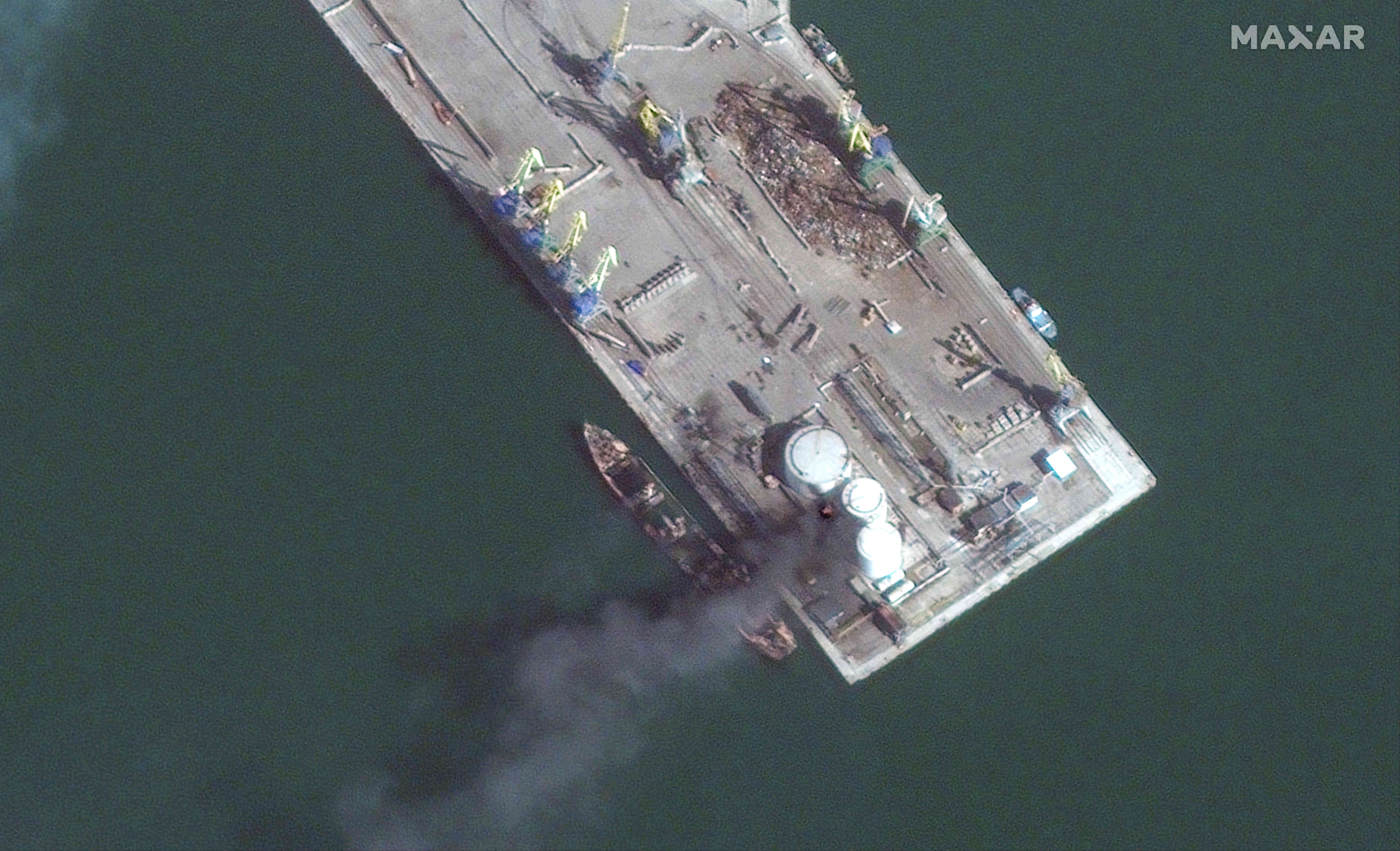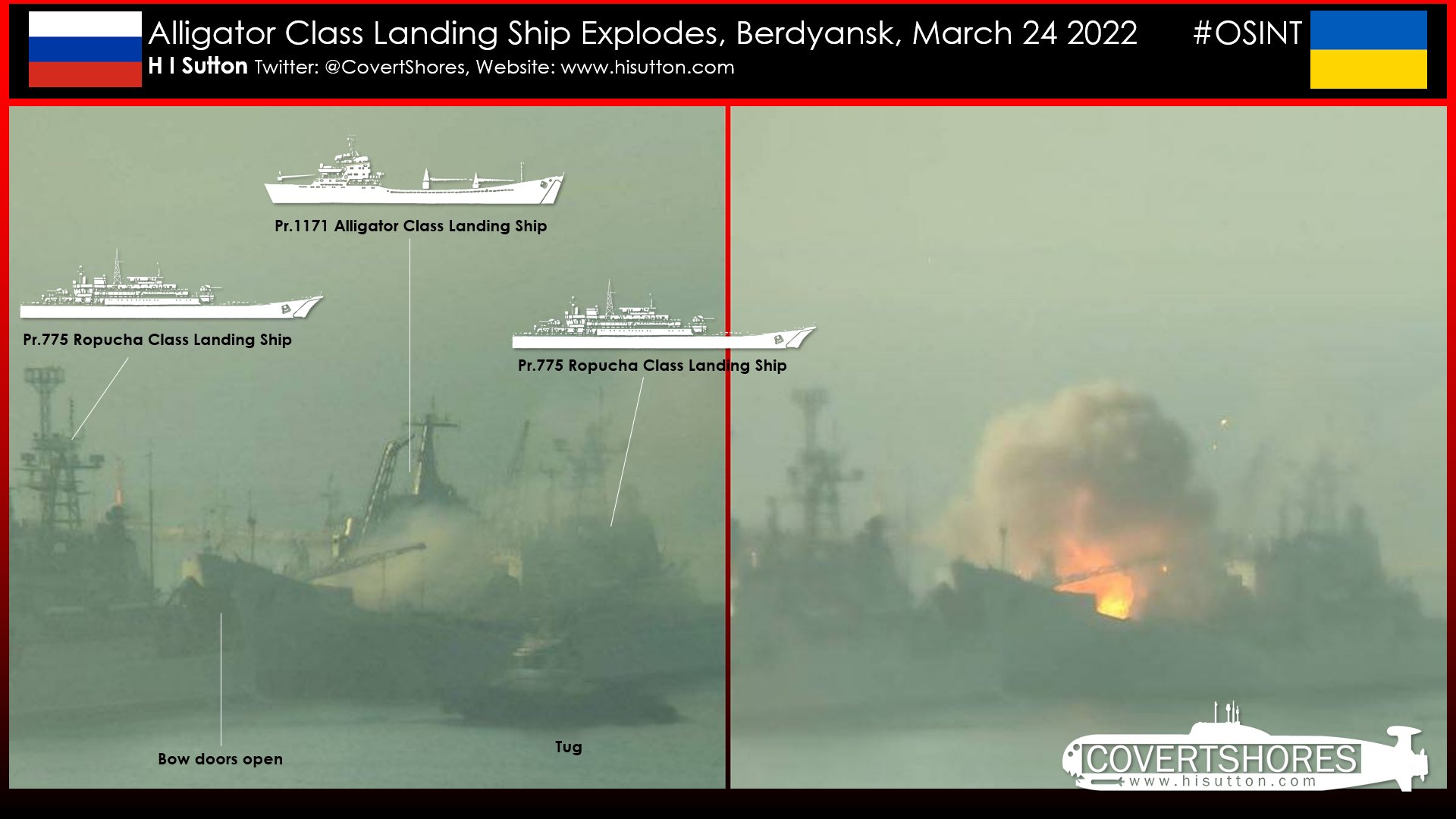
The Russian landing ship attacked by Ukrainian forces this week at in the southern port city of Berdyansk has sunk, Pentagon officials confirmed on Friday.
Satellite images provided to USNI News by Maxar Technologies prove the Alligator-class landing ship tank (LST) that was seen on video on Thursday was underwater at the side of the pier, with the superstructure and forecastle sticking up above the water.
The imagery shows that the fire spread to a merchant ship moored in front of it. It appears that the merchant ship, likely a grain carrier, had been docked there since before the invasion. The fire also spread to tanks on the pier. Both of these fires were still burning today when the satellite passed.
Video footage of the burning ship, taken soon after the attack, shows that two Ropucha-class landing ships were also damaged. They had been berthed alongside and in front of the Alligator-class amphibious ship. They sailed away fighting their own blazes as the fire on the Alligator raged.
A senior U.S. defense official confirmed to reporters on Friday that Ukrainian forces had struck and destroyed the Alligator-class LST while it was pierside.

“It appears from the imagery we’ve seen that they destroyed that ship. We don’t know how many casualties. I don’t know how many people were on the ship when it got hit,” the official said.
It is unclear whether the attack involved a ballistic missile or a drone. The U.S. defense official would not say what Ukraine used to attack the ship, citing operational security for Ukrainian forces.
The Alligator-class ship was performing a resupply mission, the official said, as fighting continues in the port city of Mariupol on the Sea of Azov.
“It’s clear that at least one thing they were trying to do was use the port there at Berdyansk as a resupply depot for their fight up near Mariupol,” the official said.
The official told reporters that there had been “no real changes in Mariupol,” as of Friday.
“Obviously vicious, vicious fighting continues there and still long-range strikes. So lots of heavy fighting there,” the official said.
The Pentagon’s assessment is that Russia is focusing on the eastern part of Ukraine in a ground offensive, as Russian forces try to cut off the Donbas region, the official said.
“They’re trying to break out – to take Mariupol – and then be able to break off north from there to do that from the south. Now that’s why they’re frustrated and frankly, we think that’s of a piece of why they had LSTs dropping off supplies in Berdyansk – to try to reinforce their efforts to take Mariupol,” the official said.
The official said there has been no change in naval activity in the Sea of Azov since the attack on the Russian amphibious ship.
Russia has been amassing landing ships for the war in Ukraine. During the build-up phase, six ships from the Northern and Baltic Fleets sailed into the Black Sea. More are on their way from the Pacific Fleet, although it is unclear whether Turkey will allow them to enter the Black Sea.
Docking at Berdyansk would have been a calculated risk for the Russian Navy. The city, which was recently captured by Russian forces, provides a logistics hub close to the siege at Mariupol. Reinforcements, armored vehicles and supplies can be unloaded. The struck landing ship appeared to have been carrying substantial quantities of ammunition which likley

Although the landing ships can theoretically perform cross-beach landings, this would have complicated unloading. The captured port of Berdyansk provides a hard quay for unloading vehicles and supplies using cranes. Additionally, the Sea of Azov is very shallow and the port is one of the few places where larger ships can get close to land.
It is unclear how the loss of the ship will affect the Russian Navy. The destruction of the LST as has only blocked one berth. There are several other berths that can still be used.
The two Ropucha-class ships have likely returned to Sevastopol in Crimea, meaning they’ve left the Sea of Azov. Two Ropuchas were observed approaching the port from the direction of Berdyansk today.
As for Odesa, the senior U.S. defense official said it appears the port city is not at risk of an immediate Russian amphibious or ground assault.
“No signs that Odesa is under an imminent threat of an amphibious assault, or frankly a ground assault. They can’t break out of Mykolaiv and we haven’t seen anything noteworthy in terms of naval activity in the Black Sea,”the official said.
Russia currently has 22 warships in the Black Sea – 15 surface combatants, while most of the remaining ships are amphibs, according to the Pentagon.
“We’ve seen them move into the Sea of Azov to conduct an amphibious assault, to try to resupply their efforts on Mariupol. We have not seen them move on Odesa. It’s unclear the degree to which they would or could use naval power to assist in what they’re trying to do in the eastern – in the Donbas,” the official said when asked how Russia moving its ships out of the Sea of Azov could affect its effort to cut off the Donbas region.
“But clearly they could reach parts of the Donbas from the Sea of Azov if they wanted to. They could absolutely use some of their surface power – particularly missiles – if they wanted to. But we just haven’t seen that happen.”





